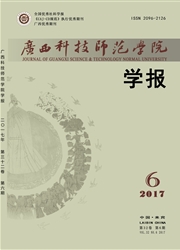

 中文摘要:
中文摘要:
本文运用审美认同的概念来探究音乐类型、社会运动与种族认同之间的关系。在20世纪的美国,其民间音乐在某个时期会破坏黑人与白人之间的绝对边界,而在另一个时期又强化了这种边界。审美认同是艺术类型与社会群体的文化结盟,借助这种结盟,群体就会感觉到某种艺术类型是代表了"我们的"或者"他们的"艺术、音乐和文学。这样,艺术类型的边界就成了社会的边界。民间音乐颠覆了艺术类型与社会边界的这种常规关系。民间音乐总是一些"他者"的文化,或者是种族的、地区的、阶级的文化,或者是民族的文化。在被叫作民间音乐之前,美国的本土音乐更多地体现了种族的完整性而不是其社会性,它是占支配地位的欧洲音乐和主要受非洲音乐影响的音乐相互混合的产物,但是又很好的表现了这两者。在商业唱片时代之前,黑人和白人音乐家们唱着同样的音乐,相互学习歌唱技巧和歌曲,并且共享一个表演的社会空间。民间音乐的概念是由学术精英创造出来的,但直到20世纪30年代到40年代后期,当有组织的左派把它当作一个文化事业时,它对大多数人来说仍然是陌生的。无论是学术精英还是政治活动家都将艺术类型建构成另一种种族化的艺术类型,而商业唱片工业又以"种族唱片"和"山地音乐"将之双重化。在那个特定的种族极端化的时代,美国的共产主义者和他们的同盟者非常有意识的使用民间音乐作为一种加强种族团结的工具。由于麦卡锡主义的压制,直到20世纪60年代,民间音乐作为种族统一的类型而得到复兴,但迅速被白人化了。为什么民间音乐的复兴与白人有关,我的解释是有三个因素:连续商业化的种族遗产;新左派不能像老左派那样有效地通过文化设施来控制音乐;在某个时候,当黑人努力要进入白人中产阶级青年所抵制的体制中时,
 英文摘要:
英文摘要:
This article uses the concept of aesthetic identity to interrogate the relationship among musical genres,social movements and racial identity.American folk music has at some times subverted and other times reinforced the categorical boundaries between blacks and whites in twentieth-century United States.Aesthetic identity is the cultural alignment of artistic genres to social groups by which groups come to feel that genres represent"our"or"their"art,music,and literature.Genre bound-aries then become social boundaries.Folk music inverts the usual relationship of genre and social boundaries.Folk music is always the culture of some"other,"ei-ther racial,regional,class,or national.Before it was called folk music,American vernacular music was much more racially integrated than the society around it,cre-olized across a spectrum from predominantly European to predominantly African-influenced,but with most exhibiting both.Before the era of commercial recording,black and white musicians sang the same music,learned techniques and songs from each other,and shared a social world of performance.The concept of folk music was created by academic elites,but remained unfamiliar to most people until the organized left took it on as a cultural project in the late 1930s and 1940s.Both academic elites and political activists constructed the genre as an alterna-tive to the racialized genres that the commercial recording industry had dubbed"race records"and"hillbilly music."American communists and their allies were especially self-conscious about using folk music as an instrument of racial soli-darity in a particularly racially polarized era.Submerged by McCarthyism until the 1960s,folk music was revived as a racially unified genre,but quickly became whitened.My explanation for why the folk revival was so white revolves around three factors:the continuing legacy of commercial racial categories,the failure of the New Left to control music through a cultural infrastructure as effectively as had the old left,and the
 同期刊论文项目
同期刊论文项目
 同项目期刊论文
同项目期刊论文
 期刊信息
期刊信息
